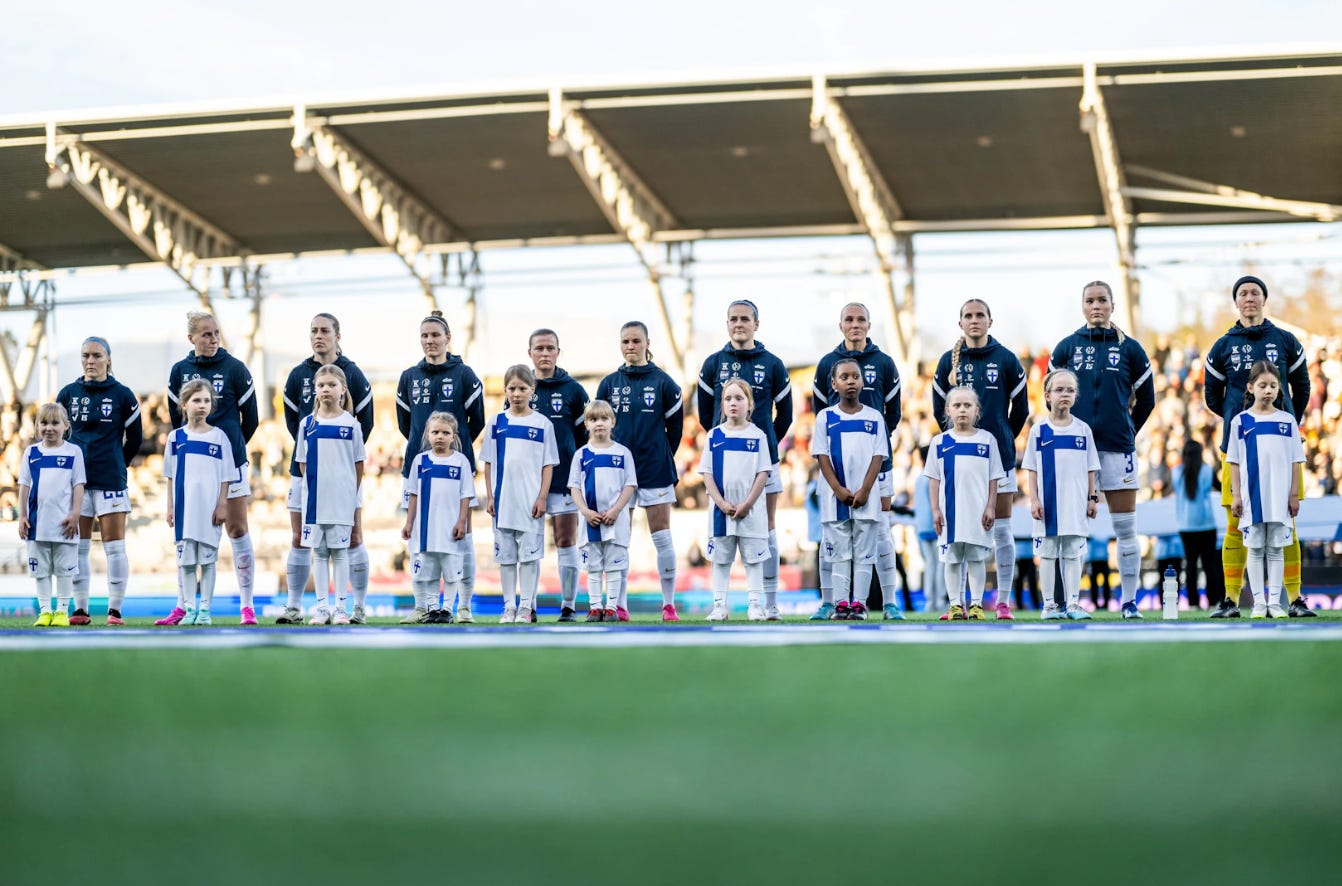Road to 2027: Finland's development of top players pushes them closer to biggest stage
The Scandinavian nation is developing more top players than ever before, but there are big challenges at domestic level...

On Friday night, Finland could take another important step towards qualifying for Euro 2025. It would be their fifth qualification in the last six European continental competitions, but the new qualification format doesn’t necessarily favour developing nations, meaning they have to face Norway at home before a trip to Italy - and that’s after a double-header with the Netherlands!
The nation’s ultimate goal though is a first World Cup, and while that is at least three years away, this is a country doing all the right things amidst the restrictions it faces, especially given its three Scandinavian neighbours are all more well established on the landscape of the women’s game.
Despite an impressive draw with the Dutch last time out, Finland sit bottom of their group, yet only three points off the top, and is assured of at least a play-off spot, but would rather avoid relegation back to League B for the next UEFA Nations League cycle.
It only emphasises how tough things are to compete in this new format, but Finland is doing everything it can to produce the necessary talent.
Check out over 100 more unique stories in WFC’s Premium section, available for just £45 for 12 months, paid in one go, or a £6 a month rolling subscription.
All subscriptions come with a 7-day free trial to allow you to explore our full archive.
Plus, guarantee you everything that is to come over the next 12 months…
Or check out previous Road to 2027 features…
“As a Finnish person, we always see negative things, so I will start with the challenges,” chuckles Marianne Miettinen, Head of Youth National teams at Finnish Football Association.
“Compared to the bigger countries who have more money, they have been developing the youth structures a lot, such as Denmark where FC Nordsjælland put an academy on the girls side, they hired eight full-time staff just for the women’s team. We don’t have the money for that in our domestic league here, but at the same time I think our strength is that we are small.
“In bigger countries, as many people as you have, there are different opinions, different ways of doing something. Here, we are work very closely and tightly with the clubs because the clubs still need the FA a lot.”
Part of that support is financing the domestic clubs with a talent coach they can appoint to work individually and collectively the players scouted as having the “highest potential”, and in return the FA can dictate who those are and how much they train outside their regular club hours, with most top division clubs part-time at best.
“We have had some generation change, some players taking on a bigger role now within the senior squad…”
“We also use these talent coaches as assistant coaches in our youth national teams,” adds Miettinen. “So that way they always get feedback between club and country. They have a natural link with their coach on both sides. We don’t have the money, so we need to use fewer people, but it creates a common understanding.”
One of the people Miettinen works closest with is new national head coach Marko Saloranta, who replaced the outgoing Anna Signeul last summer after the Euros.
Like Miettinen, Saloranta has worked in the pathway for many years, coaching several of the youth teams and therefore has a good understanding of those coming through the pathway, and has worked with many of the players before he now has in his senior team.
Keep reading with a 7-day free trial
Subscribe to Women's Football Chronicles to keep reading this post and get 7 days of free access to the full post archives.







